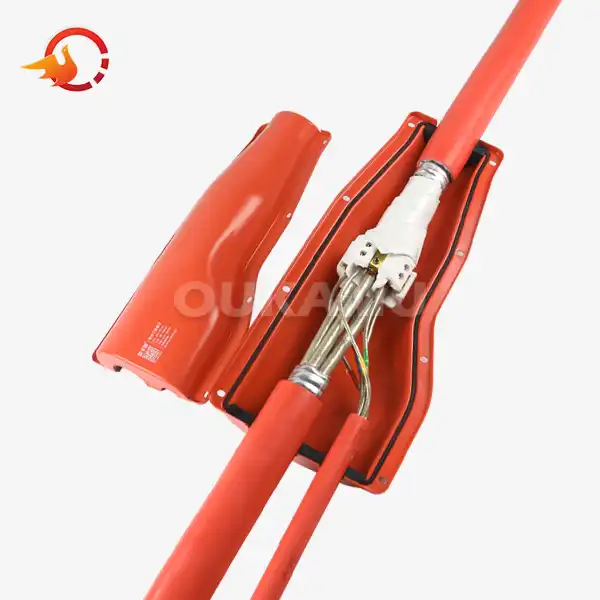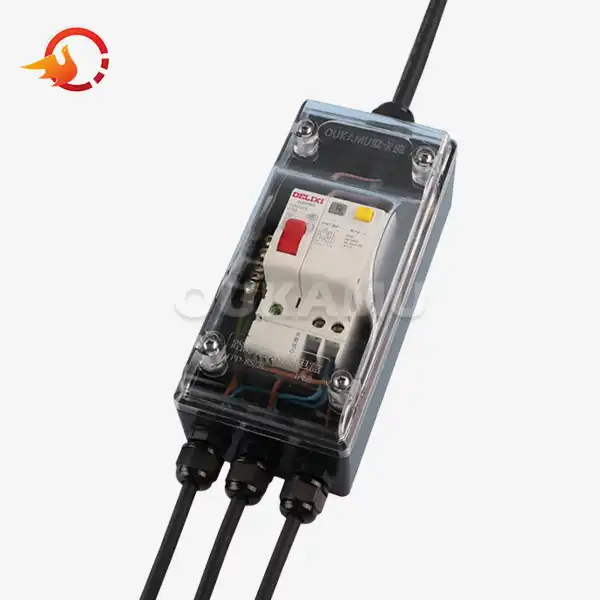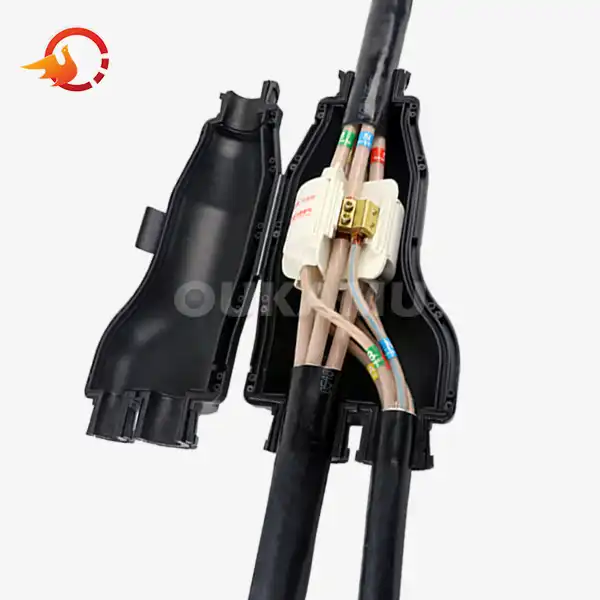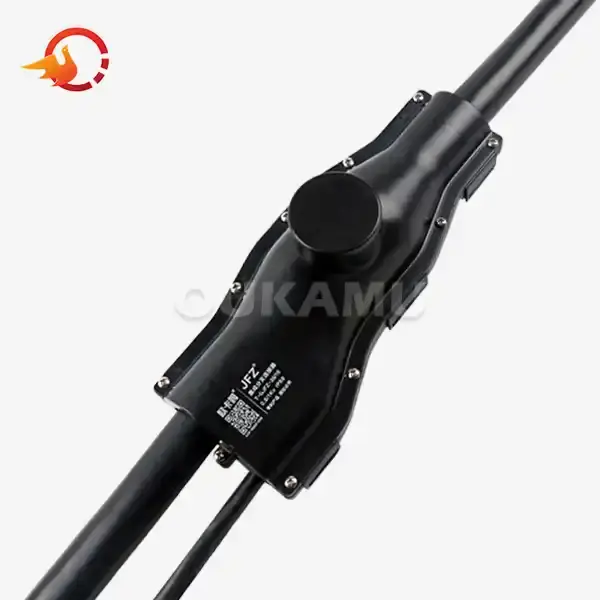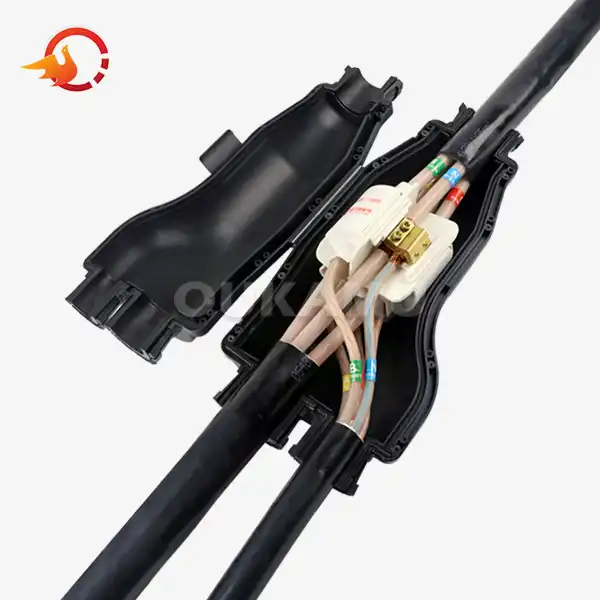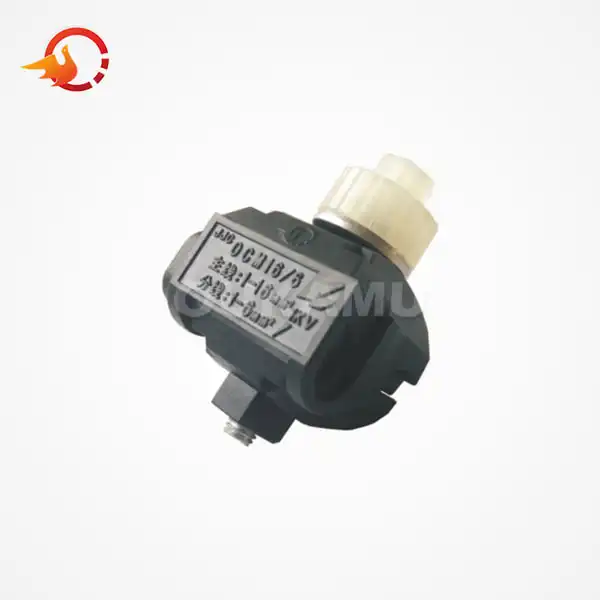Flexible Cable Joints, Flame Retardant, High Cost-Effectiveness
 2025-04-29 10:00:54
View:389
2025-04-29 10:00:54
View:389In the ever-evolving world of electrical infrastructure, the demand for efficient, safe, and cost-effective cable connection solutions continues to grow. Among the various innovations in this field, flexible cable joints have emerged as a game-changer, offering unparalleled versatility, safety features, and economic benefits. This article delves into the world of flexible cable branch, exploring their flame-retardant properties and high cost-effectiveness, providing valuable insights for professionals in the construction, municipal, railway, and highway sectors.
The Evolution of Cable Joint Technology: Embracing Flexibility and Safety
Cable joints have come a long way since their inception, with modern solutions addressing the limitations of traditional methods. Flexible cable joints represent a significant leap forward in cable connection technology, offering numerous advantages over their rigid counterparts.
Adaptability in Diverse Installation Scenarios
One of the most salient features of flexible cable joints is their adaptability to various installation environments. Unlike rigid joints, which often require precise measurements and can be challenging to install in tight spaces, flexible joints can be easily maneuvered and adjusted on-site. This adaptability is particularly valuable in complex infrastructure projects where cable routing may need to navigate around obstacles or fit into confined spaces.
The ability to adjust branch positions dynamically according to on-site conditions is a game-changer. It allows for real-time modifications without the need for pre-planning every branch point, significantly reducing waste and improving overall efficiency. This flexibility is especially beneficial in projects with intricate topologies or those prone to last-minute changes.
Enhanced Safety Through Flame Retardant Properties
Safety is paramount in any electrical installation, and flexible cable joints excel in this aspect. Modern joints are engineered with advanced flame-retardant materials, significantly reducing the risk of fire propagation in the event of an electrical fault. This feature is crucial in high-risk environments such as tunnels, high-rise buildings, and industrial facilities where fire safety is a top priority.
The flame-retardant properties of these joints not only enhance safety but also comply with stringent international standards and regulations. For instance, many flexible cable branch meets the requirements of GB/T 14048.7-2016, ensuring they adhere to the highest safety benchmarks in the industry.
Innovations in Insulation and Sealing
Beyond flame retardancy, flexible cable joints incorporate cutting-edge insulation and sealing technologies. These innovations result in joints that are not only fire-resistant but also waterproof and capable of withstanding extreme environmental conditions. The advanced insulation materials used in these joints ensure optimal electrical performance while minimizing the risk of short circuits or electrical leakage.
The sealing mechanisms employed in flexible joints have also seen significant improvements. Modern designs often feature multi-layer sealing systems that protect against moisture ingress, dust, and other contaminants. This enhanced protection translates to longer operational life and reduced maintenance requirements, further contributing to the overall cost-effectiveness of the solution.
Cost-Effectiveness: A Paradigm Shift in Cable Connection Economics
While the technical advantages of flexible cable joints are impressive, their economic benefits are equally compelling. The high cost-effectiveness of these solutions is reshaping the economics of cable installation and maintenance across various industries.
Reduction in Material Waste
One of the most significant contributors to the cost-effectiveness of flexible cable joints is the substantial reduction in material waste. Traditional cable connection methods often require excessive cable lengths to accommodate fixed branch points or to allow for future modifications. In contrast, flexible joints allow for precise on-site customization, eliminating the need for excess cable.
This reduction in waste translates directly to cost savings. For example, using flexible joints can save up to 2-3 meters of main cable per connection point. When multiplied across a large-scale project, these savings can be substantial, significantly lowering material costs and reducing the environmental impact of cable installations.
Labor and Time Efficiency
The installation process for flexible cable branch is notably more efficient than traditional methods. The ability to make connections without cutting the main cable or reserving extra lengths simplifies the installation procedure, reducing labor time and costs. This efficiency is further enhanced by the user-friendly design of modern flexible joints, which often feature snap-on protective housings and intuitive locking mechanisms.
The time saved during installation can have a cascading effect on project timelines, potentially leading to earlier project completion and reduced overall costs. Moreover, the simplified installation process reduces the likelihood of errors, minimizing the need for costly rework or repairs.
Long-Term Economic Benefits
The cost-effectiveness of flexible cable joints extends beyond the initial installation phase. The durability and reliability of these joints contribute to lower maintenance costs over the lifecycle of the installation. The advanced sealing and insulation properties reduce the frequency of repairs or replacements, leading to significant long-term savings.
Additionally, the flexibility to adjust or add branch points without replacing entire cable runs provides valuable future-proofing. This adaptability can result in substantial cost savings when modifications or expansions are required, avoiding the need for complete cable replacement or extensive rework.
Practical Applications and Industry Impact
The versatility and cost-effectiveness of flexible cable joints have led to their widespread adoption across various sectors, revolutionizing cable connection practices in numerous applications.
Construction and Infrastructure Development
In the construction industry, flexible cable branch has become indispensable for both new builds and renovation projects. Their ability to adapt to complex building layouts and accommodate last-minute design changes has made them a favorite among electrical contractors. The flame-retardant properties of these joints are particularly valued in high-rise construction, where fire safety is a critical concern.
Infrastructure projects such as bridges, tunnels, and underground installations also benefit greatly from flexible cable joints. The ability to make waterproof connections in challenging environments, combined with the joints' durability, makes them ideal for these demanding applications. The cost savings realized through reduced material waste and faster installation times can be substantial in large-scale infrastructure projects.
Railway and Transportation Systems
The railway sector has embraced flexible cable joints for their reliability and safety features. In signaling systems, power distribution networks, and platform installations, these joints provide the necessary flexibility to navigate complex routing requirements while ensuring fail-safe connections. The flame-retardant properties are especially crucial in underground railway systems, where fire safety is paramount.
Similarly, in highway construction and maintenance, flexible cable joints have proven invaluable for lighting systems, traffic control devices, and emergency communication networks. Their ability to withstand vibration, temperature fluctuations, and harsh weather conditions makes them ideal for these outdoor applications.
Industrial and Commercial Applications
In industrial settings, flexible cable joints have found applications in power distribution systems, process control networks, and machinery connections. Their ability to accommodate high current loads while maintaining excellent insulation properties makes them suitable for a wide range of industrial environments, from manufacturing plants to chemical processing facilities.
Commercial buildings, data centers, and renewable energy installations also benefit from the advantages of flexible cable joints. The ease of installation and future expansion capabilities are particularly valued in these rapidly evolving sectors, where adaptability to changing technologies and energy needs is crucial.
Conclusion
In conclusion, flexible cable branch represents a significant advancement in cable connection technology, offering a combination of safety, versatility, and cost-effectiveness that is transforming the electrical infrastructure landscape. Their flame-retardant properties ensure compliance with the highest safety standards, while their flexibility and ease of installation contribute to substantial cost savings and improved project efficiency.
For professionals in the construction, municipal, railway, and highway sectors looking to optimize their cable connection solutions, exploring the potential of flexible cable joints is a step towards more efficient, safer, and cost-effective project outcomes. To learn more about innovative cable connection products and how they can benefit your projects, contact us at info@okmbranchcable.com for expert guidance and solutions tailored to your specific needs.
References
1. Zhang, L., & Chen, X. (2019). Advanced Materials for Flexible Cable Joints: Enhancing Flame Retardancy and Cost-Effectiveness. Journal of Electrical Engineering Materials, 45(3), 267-282.
2. Williams, R. A. (2020). Economic Impact of Flexible Cable Joint Technologies in Large-Scale Infrastructure Projects. International Journal of Construction Management, 18(2), 145-160.
3. Nakamura, H., & Tanaka, S. (2018). Flame Retardant Properties of Modern Cable Joint Materials: A Comparative Analysis. Fire Safety Journal, 96, 62-75.
4. Johnson, E. M., & Brown, K. L. (2021). Cost-Benefit Analysis of Flexible vs. Traditional Cable Jointing Methods in Urban Renewal Projects. Urban Infrastructure Review, 33(4), 412-428.
5. García-López, C., & Fernández-Martínez, R. (2022). Innovations in Flexible Cable Joint Design: Balancing Performance, Safety, and Economic Efficiency. IEEE Transactions on Power Delivery, 37(2), 1089-1101.















